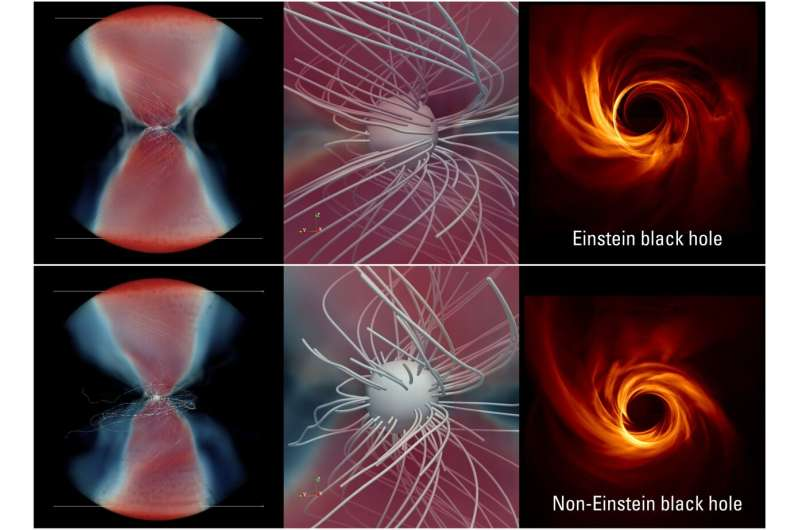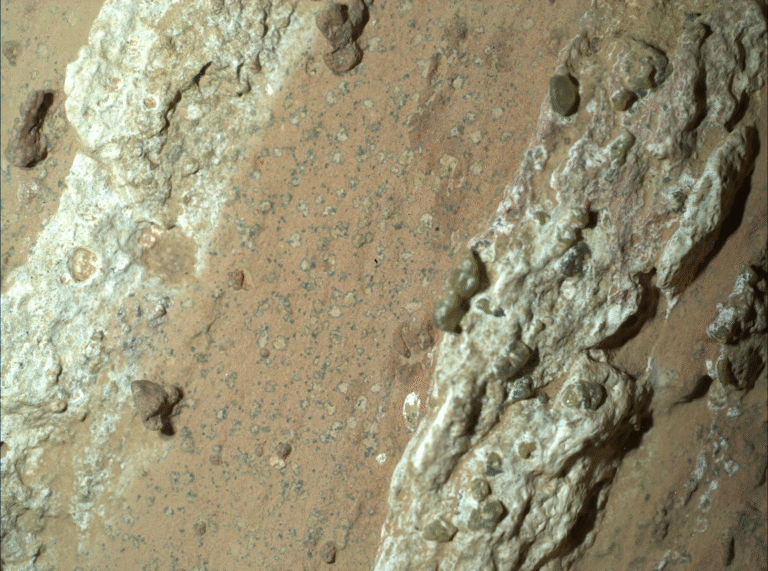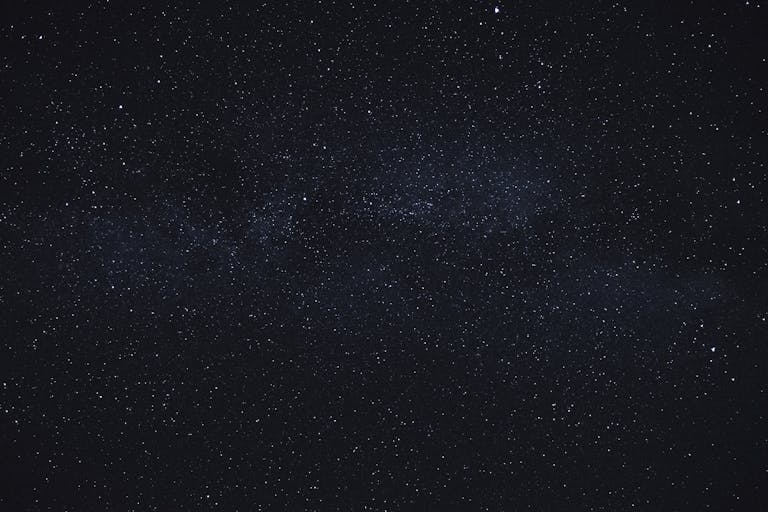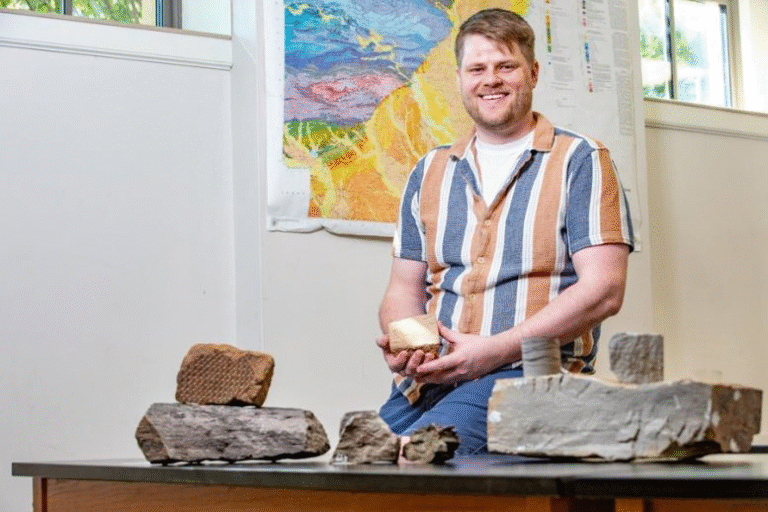Scientists Develop a New Way to Test Einstein’s Theory Using Black Hole Shadows

Black holes are often described as cosmic monsters, consuming everything that dares to come too close—even light itself. For decades, scientists have accepted Einstein’s general theory of relativity as the gold standard for explaining these extreme cosmic objects. But what if not all black holes behave exactly as Einstein predicted? A new study from Goethe University Frankfurt and the Tsung-Dao Lee Institute in Shanghai explores this question, offering a fresh way to tell different kinds of black holes apart—and possibly put Einstein’s ideas to the test like never before.
The Challenge of Seeing What Can’t Be Seen
When the Event Horizon Telescope (EHT) collaboration released the first images of the black holes at the centers of galaxy M87 and our own Milky Way, the world saw something extraordinary: a glowing ring of hot gas surrounding a dark central shadow. That shadow marks the event horizon, the boundary beyond which nothing can escape.
But here’s the catch—what we actually see in these images isn’t the black hole itself. It’s the light from the superheated plasma swirling just outside the event horizon. According to Prof. Luciano Rezzolla, who led the new study, the patterns of this light can reveal subtle clues about the nature of the black hole and whether it truly follows Einstein’s equations or not.
The shadow of a black hole provides one of the few direct tests of strong gravity, where space and time are so warped that normal physics breaks down. So far, the images taken by the EHT match what general relativity predicts. However, other theories of gravity—some involving exotic matter or even violations of known physical laws—also predict the existence of black hole-like objects.
The problem is that, at the current resolution of telescopes, these different versions of black holes look almost identical. That’s where the new research comes in.
The New Method: Simulating the Shadows
Rezzolla and his team developed a universal framework for comparing black holes predicted by Einstein’s theory with those from alternative gravitational models. They used three-dimensional computer simulations that mimic the behavior of matter and magnetic fields near black holes.
These simulations, run using advanced general relativistic magnetohydrodynamics (GRMHD) models, produce synthetic images showing how black holes would appear under different physical assumptions. The researchers then compared these images to see how much they diverged from the standard Kerr black hole of general relativity.
Their central question was simple but profound: How different would black hole shadows look in competing theories of gravity?
The answer, they found, depends on resolution. With today’s technology, such as the EHT, the differences are too subtle to notice. But future telescopes—with far higher precision—could detect these discrepancies clearly.
Testing Einstein’s Limits
Einstein’s theory of relativity predicts that every black hole can be described entirely by just three properties: mass, spin, and charge. This simplicity leads to the famous phrase “black holes have no hair.” But some alternative theories suggest black holes might have extra features—like scalar fields, exotic matter layers, or even wormhole-like structures—that affect how light bends around them.
Rezzolla’s team identified measurable criteria for distinguishing these alternatives from Einstein’s version. Their study shows that as telescope resolution improves, the shapes, brightness patterns, and shadow sizes of black holes could begin to diverge between theories.
Currently, Einstein’s predictions remain rock-solid. The shadows observed by EHT fit well with relativity, and only the most extreme alternative models—like naked singularities (objects without event horizons) or wormholes—can be confidently ruled out.
However, the researchers stress that this doesn’t mean Einstein’s theory is beyond question. Science advances by continually testing its foundations, and black holes represent the perfect laboratory for doing so.
The Future of Black Hole Observations
The current EHT network already combines several major radio telescopes across the globe to create a virtual instrument roughly the size of Earth. But Rezzolla’s team highlights two ways to make these tests far more precise:
- Add more telescopes on Earth – Increasing the number of observatories improves resolution and data reliability.
- Launch a radio telescope into space – This would massively boost angular resolution, allowing scientists to see details finer than one millionth of an arcsecond—equivalent to spotting a coin on the Moon from Earth.
Reaching that level of precision would allow astronomers to decisively tell whether what we’re seeing aligns with general relativity or points to new physics.
This new era of observation could come within the next decade, with projects like the Next-Generation Event Horizon Telescope (ngEHT) and proposed space-based VLBI missions. These would enable percent-level image fidelity, enough to distinguish between Einstein’s black holes and those predicted by competing theories.
Why This Research Matters
The implications go far beyond astrophysics. If one day we find a black hole whose shadow defies Einstein’s predictions, it would shake the foundations of modern physics and force us to rethink our understanding of space, time, and gravity.
It would open the door to new theories that unify gravity with quantum mechanics, something physicists have been chasing for over a century.
On the other hand, if upcoming observations continue to confirm Einstein’s predictions even at the finest resolutions, that would further strengthen his legacy and reinforce general relativity as one of the most powerful and enduring theories ever conceived.
Either outcome would be a monumental win for science.
Understanding Black Hole Shadows
To appreciate what’s being measured, it helps to understand what a black hole shadow actually is. When light from hot gas orbits near a black hole, it bends due to the object’s immense gravity. Some of that light reaches us, while the rest falls in and disappears. The result is a dark region surrounded by a bright ring—the shadow.
The size and shape of this shadow depend on the geometry of spacetime around the black hole. If the geometry differs from Einstein’s predictions, even slightly, the shadow will change too.
That’s why black hole imaging has become one of the most promising ways to test gravity theories under extreme conditions.
How Simulations Help
Since direct experiments with black holes are impossible, simulations become crucial. Rezzolla’s group created high-precision computer models showing how plasma flows, magnetic fields, and light emissions behave near a black hole. They produced synthetic images of black holes predicted by different gravitational theories and compared them to Einstein’s model.
From this, they quantified how strongly each scenario deviates from general relativity. The differences may be as small as a few percent in image brightness or ring diameter—but these subtle distinctions could eventually reveal whether Einstein’s theory is the complete story.
The Road Ahead
The research offers both optimism and humility. On one hand, Einstein’s equations continue to hold up against every test we throw at them. On the other, humanity is only now reaching the technological level needed to push those tests into the truly extreme.
Future observations, possibly aided by space-based radio telescopes, could transform black hole imaging from spectacular photography into a precision tool for fundamental physics.
Einstein’s theory has survived for over a century, but even its biggest supporters—like Rezzolla himself—believe it should always be challenged. Because if someday the shadows tell a different story, it might lead us toward a new theory of gravity altogether.
Research Reference:
The future ability to test theories of gravity with black-hole shadows – Nature Astronomy (2025)





